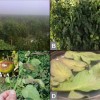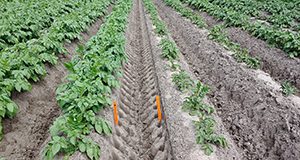Plant-parasitic nematodes are a major pest on potatoes in Florida. Root-knot, sting, and stubby-root nematodes are the primary problems. Sampling is an important component of confirming nematode problems in a field. Nematode management relies heavily on chemical control (nematicides), but crop rotation and soil culture are important considerations as well. This 12-page fact sheet about nematode management in potatoes was written by Zane J. Grabau and J.W. Noling and published by the UF Department of Entomology and Nematology.
http://edis.ifas.ufl.edu/ng029
Tag: Potato Pest Management
Late Blight of Potato and Tomato (PP301)
 Both potato and tomato are susceptible to late blight, an aggressive disease capable of rapidly destroying entire fields. The disease is distributed worldwide and occurs wherever tomatoes or potatoes are grown and conditions favor disease development. This 4-page fact sheet was written by Ryan Donahoo and Pamela Roberts, and published by the UF Department of Plant Pathology, December 2012.
Both potato and tomato are susceptible to late blight, an aggressive disease capable of rapidly destroying entire fields. The disease is distributed worldwide and occurs wherever tomatoes or potatoes are grown and conditions favor disease development. This 4-page fact sheet was written by Ryan Donahoo and Pamela Roberts, and published by the UF Department of Plant Pathology, December 2012.
http://edis.ifas.ufl.edu/pp301
HS194/WG035 Weed Control in Potato
HS-194, a 3-page fact sheet by William M. Stall and Chad M. Hutchinson, describes effective weed management practices for cultivation of potatoes in Florida, and a table of chemical weed controls. Published by the UF Department of Horticultural Sciences, April 2009.
http://edis.ifas.ufl.edu/WG035
